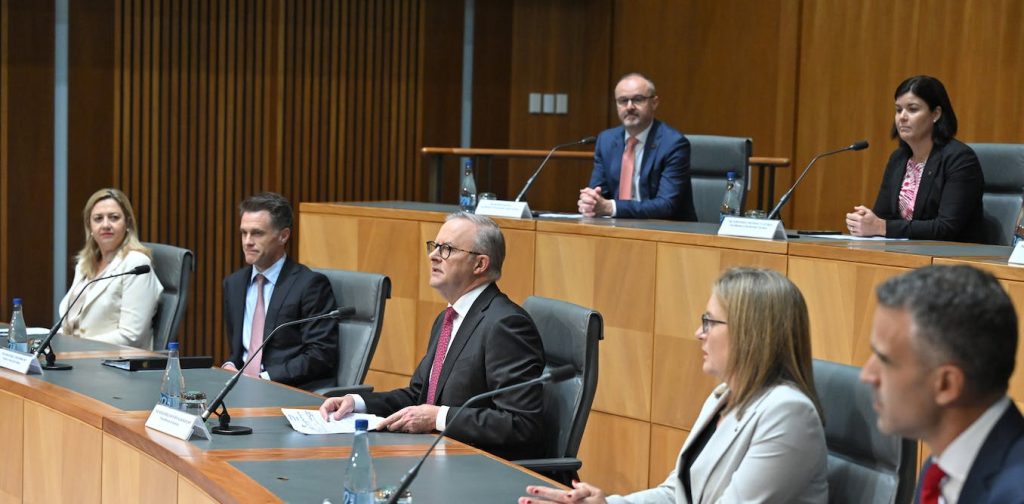The Albanese government has promised extra funding for health and to extend its top-up of the GST, in exchange for the states undertaking more of the heavy lifting on disability to help curb the National Disability Insurance Scheme’s cost blowout.
Ahead of Thursday’s release of the review into NDIS, the states have agreed to provide more and expanded services for people with disability, both those on the NDIS and those not eligible for it.
These would include, for example, services for children with mild developmental issues, the number of whom on the NDIS has ballooned, contributing to its unsustainable cost escalation.
These services would be delivered through, among other avenues, child care and schools. The changes would be phased in.
Additional costs are to be split on a 50-50 basis between the federal and the state and territory governments.
The Commonwealth has agreed to cap extra spending for states and territories on the new and expanded disability services to ensure the combined package of health and disability reforms would see all states and territories better off.
The federal government aims to limit the rate of growth of the NDIS to 8% a year by 2026. The scheme is expected to cost about $42 billion in 2023–24. Its cost is growing more than 14% annually.
Under the trade off struck at Wednesday’s national cabinet, the Commonwealth will provide $1.2 billion to strengthen Medicare to take some pressure off hospitals.
This will include extra funds for Medicare Urgent Care Clinics, which Prime Minister Anthony Albanese said would increase the number of clinics beyond the 58 due to be delivered by the end of the year. The money will also go to reforms in regulatory settings and professional development in the health sector and to support elderly people to avoid unnecessary hospital admissions and to be discharged sooner when they are hospitalised.
In a major health move, the Commonwealth contributions under the National Health Reform Agreement will be boosted to 45% over a maximum of 10 year “glide path” from July 1 2025, with 42.5% achieved before 2030. The present contribution is under 40%.
The current 6.5% funding cap will be replaced by a more generous cap. This will be a cumulative cap over 2025-30, which will include a first year “catch up” growth premium.
Treasurer Jim Chalmers said the extra cost of the new hospitals agreement, which begins in 2025, would be about $13.2 billion from then until the end of the decade.
Stephen Duckett, from the University of Melbourne, welcomed the initiatives, especially the reversal of the downward trend in federal hospital funding. “This means states can expand hospital services to meet the demand,” he said.
The federal government has undertaken to extend the top-up of the GST in its present form for three years from 2027-28. This will cost an extra about $3.5 billion a year.
Chalmers said other aspects of the GST deal legislated in 2018 would remain in place, including reforms that provide Western Australia “with a fair share of GST revenues”.
There have been repeated calls from other states for WA to receive less generous treatment. But with Labor trying to hold on to the extra WA seats it won in 2022, it has every reason to keep the present allocation.
Appearing at a news conference with state and territory leaders, Albanese said: “We end 2023 showing that federal-state relations can truly be harmonised and harnessed in a way that benefits our entire constituency, no matter which state or territory you live in”.

